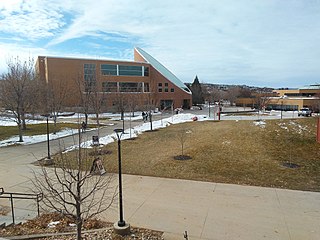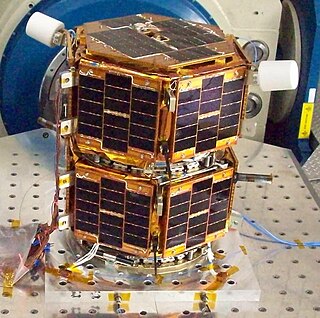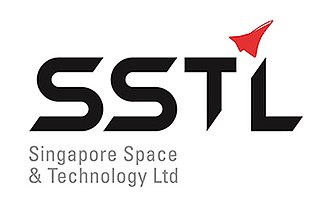Related Research Articles

Logan is a city in Cache County, Utah, United States. The 2020 census recorded the population was 52,778. Logan is the county seat of Cache County and the principal city of the Logan metropolitan area, which includes Cache County and Franklin County, Idaho. The Logan metropolitan area contained 125,442 people as of the 2010 census and was declared by Morgan Quitno in 2005 and 2007 to be the safest in the United States in those years. Logan also is the location of the main campus of Utah State University.

Utah State University is a public land-grant research university with its main campus in Logan, Utah. It is accredited by the Northwest Commission on Colleges and Universities. With nearly 20,000 students living on or near campus, USU is Utah's largest public residential campus. As of Fall 2022, there were 27,943 students enrolled, including 24,835 undergraduate students and 3,108 graduate students. The university has the highest percentage of out-of-state students of any public university in Utah, totaling 23% of the student body.

The University of Colorado Boulder is a public research university in Boulder, Colorado. Founded in 1876, five months before Colorado became a state, it is the flagship university of the University of Colorado system. CU Boulder is a member of the Association of American Universities, a selective group of major research universities in North America, and is classified among R1: Doctoral Universities – Very high research activity. In 2021, the university attracted the support of over $634 million for research and spent $536 million on research and development according to the National Science Foundation, ranking it 50th in the nation.

Southern Utah University (SUU) is a public university in Cedar City, Utah. Founded in 1897 as a normal school, Southern Utah University now has over 1,800 graduates each year with baccalaureate and other graduate degrees from its six colleges. SUU offers more than 140 undergraduate and 19 graduate programs. More than 10,000 students attend SUU.
The International Society of Transport Aircraft Trading (ISTAT) is a non-profit aviation industry association. Founded in 1983, ISTAT is dedicated to fostering and promoting interest and educational opportunities in commercial aviation, while also providing a forum for networking among those involved in the industry.

The Space Generation Advisory Council (SGAC), in support of the United Nations Programme on Space Applications, is a non-governmental organization and professional network that "aims to bring the views of students and young space professionals to the United Nations (UN), space industry, and other organizations." SGAC has the clear purpose of connecting, inspiring, engaging, and advocating; it works to raise awareness among the next generation of space professionals on a global scale. The SGAC network currently represents over 15,000 members across 150 countries - the world's largest network of students, young professionals, and alumni in the space industry. SGAC operates in the six official languages of the United Nations, though the official working language is English.

The Lutheran Student Movement - United States of America (LSM-USA) is a student-led organization of Lutheran college students. The movement's staff and resources are housed at the Churchwide Office of the Evangelical Lutheran Church in America in Chicago, Illinois.
A magic convention is a gathering of professional magicians, magical hobbyists, dealers, collectors of magical apparatus, books and ephemera, and other students of the art of magic. It provides a place for lectures of subjects related to the craft, as well as a series of sample performances of noted or innovative techniques. Many conventions also hold competitions to judge who excels at a particular style, and present awards in various categories such as sleight of hand, card tricks, mentalism, and stage illusions. The largest magic convention is The Blackpool Magician's Convention which is attended by over 3,500 magicians.

Kent State University at Stark is a satellite campus of Kent State University in Jackson Township, Ohio. It is accredited by the Higher Learning Commission.

Formation Autonomy Spacecraft with Thrust, Relnav, Attitude and Crosslink is a pair of nanosatellites developed and built by students at The University of Texas at Austin. The project is part of a program sponsored by the Air Force Research Laboratory (AFRL), whose goal is to lead the development of affordable space technology. The FASTRAC mission will specifically investigate technologies that facilitate the operation of multiple satellites in formation. These enabling technologies include relative navigation, cross-link communications, attitude determination, and thrust. Due to the high cost of lifting mass into orbit, there is a strong initiative to miniaturize the overall weight of spacecraft. The utilization of formations of satellites, in place of large single satellites, reduces the risk of single point failure and allows for the use of low-cost hardware.
The University Nanosat Program is a satellite design and fabrication competition for universities. It is jointly administered by the Air Force Office of Scientific Research (AFOSR), the Air Force Research Laboratory (AFRL), the American Institute of Aeronautics and Astronautics (AIAA), the Space Development and Test Wing and the AFRL Space Vehicles Directorate's Spacecraft Technology division. NASA's Goddard Space Flight Center was involved from the program inception through Nanosat-3.
The Utah Science Technology and Research Initiative (USTAR) is a technology-based economic development agency funded by the state of Utah. The organization works to develop ideas and research into marketable products and successful companies through its competitive grant and entrepreneur support programs. USTAR facilitates the diversification of the state’s tech economy, increases private follow-on investment, and supports the creation of technology-based start-up firms, higher paying jobs and additional business activity leading to a statewide expansion of Utah’s tax base.

The Jon M. Huntsman School of Business is located at Utah State University in Logan, Utah.

A CanSat is a type of sounding rocket payload used to teach space technology. It is similar to the technology used in miniaturized satellites. No CanSat has ever left the atmosphere, nor orbited the earth.
The NOWSA is an Australian feminist student organisation founded on ideals of creating a grassroots, autonomous network concerned with issues that impact women and women students.

Students for the Exploration and Development of Space (SEDS) is a non-profit international student organization whose purpose is to drive space advocacy of space exploration and development through educational and engineering projects.
SpaceNews is a print and digital publication that covers business and political news in the space and satellite industry. SpaceNews provides news, commentary and analysis to an audience of government officials, politicians and executives within the space industry. SpaceNews details topics in civil, military and space and the satellite communications business.

The Singapore Space and Technology Ltd (SSTL) is a non-governmental space organisation based in Singapore within the aerospace industry.

GASPACS was a NASA sponsored 1U CubeSat developed entirely by undergraduate members of Utah State University's Get Away Special (GAS) team. The primary mission objective of GASPACS was to deploy a 1-meter inflatable aerodynamic boom to passively stabilize its attitude. GASPACS was the world's first CubeSat to be developed entirely by undergraduate students, and was also the world's first CubeSat to utilize a Raspberry Pi Zero as its flight computer.

SpaceX CRS-27, also known as SpX-27, is a Commercial Resupply Service mission to the International Space Station (ISS) launched on 15 March 2023. The mission is contracted by NASA and will be flown by SpaceX using a Cargo Dragon. This will be the seventh flight for SpaceX under NASA's CRS Phase 2.
References
- ↑ Werner, Debra (August 3, 2017). "As annual SmallSat gathering convenes, small satellites have never been a bigger deal". Space News. Retrieved August 3, 2019.